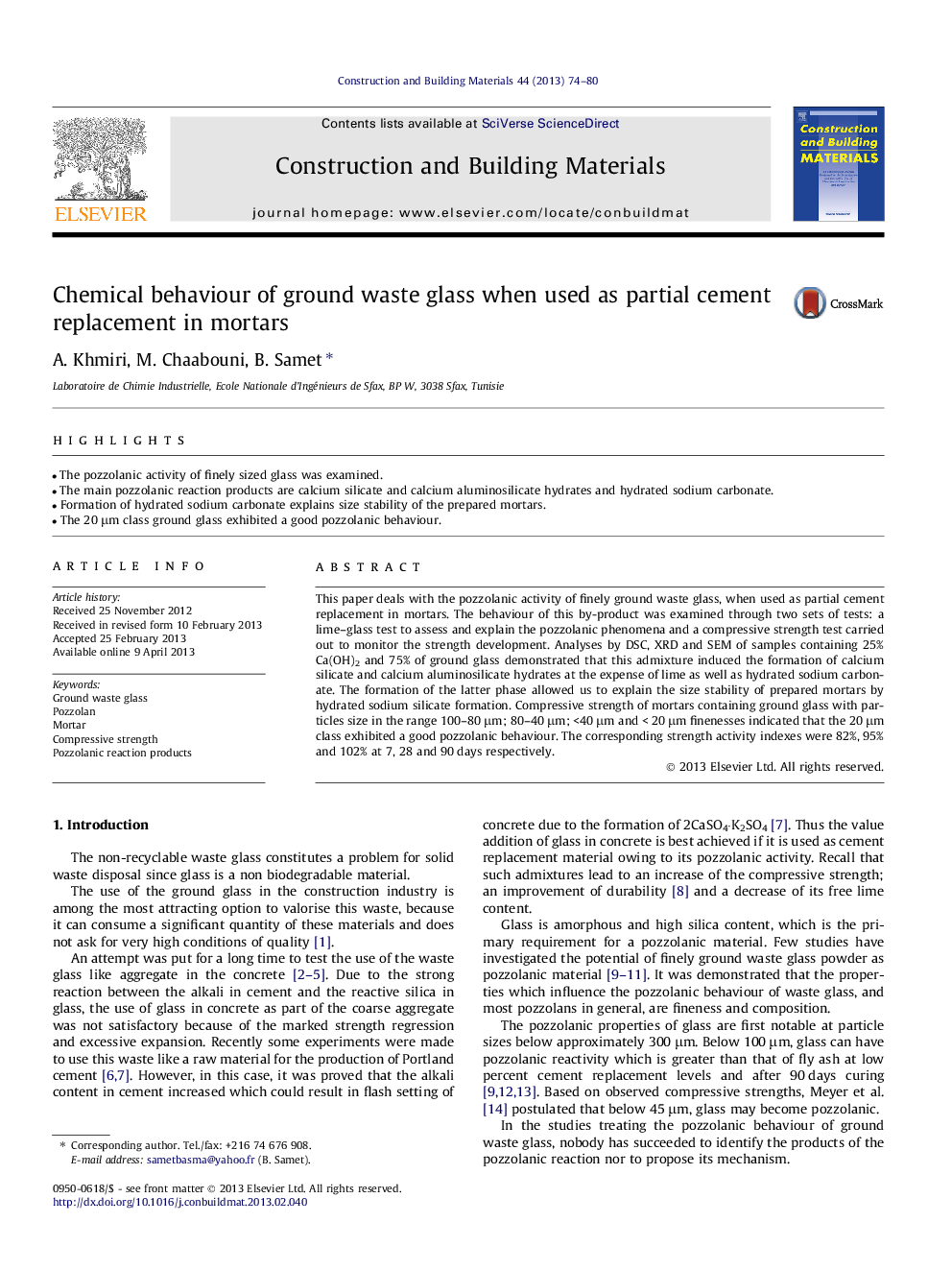| Article ID | Journal | Published Year | Pages | File Type |
|---|---|---|---|---|
| 258043 | Construction and Building Materials | 2013 | 7 Pages |
•The pozzolanic activity of finely sized glass was examined.•The main pozzolanic reaction products are calcium silicate and calcium aluminosilicate hydrates and hydrated sodium carbonate.•Formation of hydrated sodium carbonate explains size stability of the prepared mortars.•The 20 μm class ground glass exhibited a good pozzolanic behaviour.
This paper deals with the pozzolanic activity of finely ground waste glass, when used as partial cement replacement in mortars. The behaviour of this by-product was examined through two sets of tests: a lime–glass test to assess and explain the pozzolanic phenomena and a compressive strength test carried out to monitor the strength development. Analyses by DSC, XRD and SEM of samples containing 25% Ca(OH)2 and 75% of ground glass demonstrated that this admixture induced the formation of calcium silicate and calcium aluminosilicate hydrates at the expense of lime as well as hydrated sodium carbonate. The formation of the latter phase allowed us to explain the size stability of prepared mortars by hydrated sodium silicate formation. Compressive strength of mortars containing ground glass with particles size in the range 100–80 μm; 80–40 μm; <40 μm and < 20 μm finenesses indicated that the 20 μm class exhibited a good pozzolanic behaviour. The corresponding strength activity indexes were 82%, 95% and 102% at 7, 28 and 90 days respectively.
